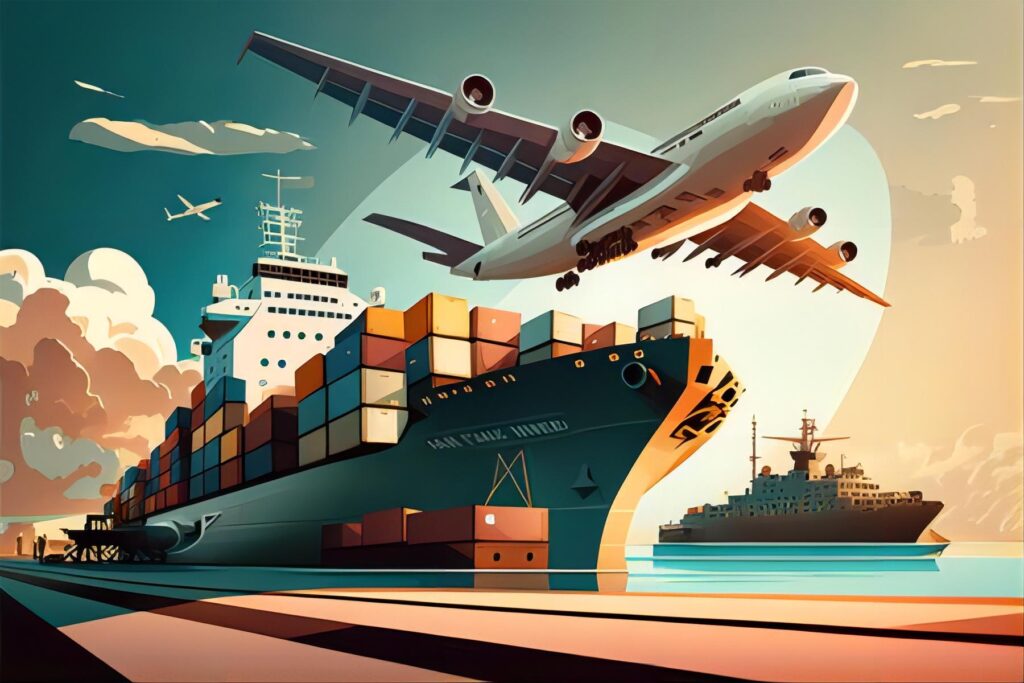- By TOP CHINA FREIGHT
- April 18, 2025
- Shipping
How to Coordinate Shipment Batches to France
When dealing with shipping from China to France, coordinating shipment batches efficiently is essential for maintaining smooth and cost-effective logistics. Whether you’re dealing with large shipments or small batches, proper planning ensures timely delivery and minimizes costs. This post will cover how to coordinate shipment batches to France, the importance of cross-border transportation from China to France, and strategies for importing consumer goods into France.
1. Understanding Shipment Batches for France
Coordinating shipment batches for France involves grouping goods into manageable units, optimizing both shipping costs and delivery times. Batch shipping helps businesses take advantage of bulk transport discounts while ensuring that items are delivered in a timely manner. For efficient coordination, consider the following tips:
- Group similar items: Ship goods of the same type or destination together. This reduces handling time and simplifies customs processes.
- Plan batch schedules: Depending on the volume, shipping weekly or bi-weekly can ensure that shipments reach France on time without causing unnecessary storage delays.
2. Cross-Border Transportation from China to France
Efficient cross-border transportation from China to France requires choosing the right mode of transport. The most common options for shipping from China to France include sea freight, air freight, and rail freight:
- Sea Freight: Ideal for large-volume shipments, sea freight is economical but slower. It’s perfect for non-urgent goods.
- Air Freight: For faster delivery, air freight is preferred, though it comes at a higher cost. It’s suitable for high-value or time-sensitive items.
- Rail Freight: As a hybrid solution, rail freight offers a balance between cost and speed, with an emerging route that connects China and France across Europe.
By carefully choosing the right transportation method, businesses can reduce costs while ensuring their goods arrive in a timely manner.
3. Importing Consumer Goods into France
Importing consumer goods into France involves navigating through customs regulations, taxes, and import duties. Key factors for a smooth import process include:
- Customs Documentation: Ensure all documents, such as invoices, bills of lading, and certificates of origin, are in order to avoid delays at customs.
- Tariffs and Taxes: France, as part of the European Union, follows EU regulations on tariffs and taxes. It’s important to stay updated on any changes to avoid unexpected charges.
- Packaging and Labeling: Consumer goods must comply with French and EU regulations for packaging, labeling, and safety standards.
Working with an experienced freight forwarder can help streamline the import process, ensuring that consumer goods are compliant with all regulations.

PAA (People Also Ask)
How do I coordinate shipment batches to France?
To coordinate shipment batches to France, group similar items together, plan shipment schedules, and choose the most appropriate transportation method. This will ensure efficient delivery and reduced costs.
What is the best cross-border transportation from China to France?
The best cross-border transportation from China to France depends on your shipment’s size and urgency. Sea freight is cost-effective for large shipments, air freight is ideal for time-sensitive goods, and rail freight provides a middle-ground option.
What are the requirements for importing consumer goods into France?
When importing consumer goods into France, ensure you have the correct customs documentation, understand applicable tariffs and taxes, and comply with packaging and labeling regulations. Working with a professional freight forwarder can help ensure compliance.
Conclusion
Coordinating shipment batches to France, understanding cross-border transportation from China to France, and following the right steps for importing consumer goods into France are essential for a smooth logistics process. By optimizing batch shipments, choosing the right transportation methods, and staying compliant with import regulations, businesses can reduce costs and improve efficiency.
Tags :
- Air freight China to France
- Consumer goods import France
- Cross-border logistics France
- Cross-border transportation China to France
- France import logistics
- Importing consumer goods into France
- Rail freight China to France
- Sea freight China to France
- Shipment batches to France
- Shipping coordination for France
- shipping from china to france
